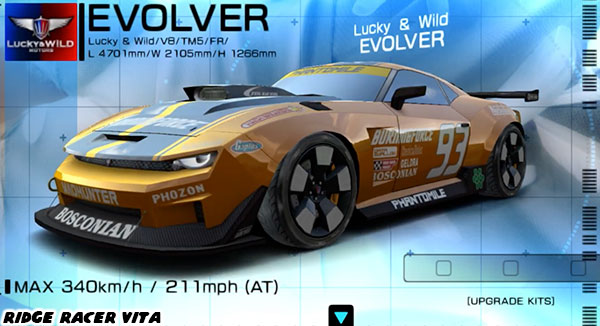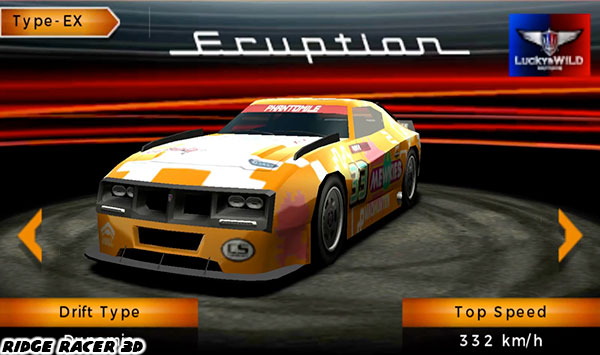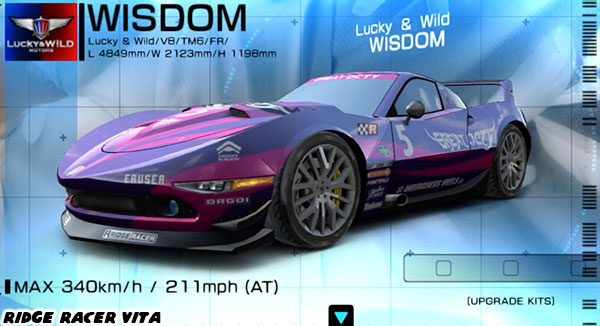Hello friends, I just wanted to make sure that those of you that are into racing games and have a mobile device know that Ridge Racer Slipstream is still one of the best purchases you could ever get. The developers at
Invictus released this gem for Namco-Bandai last year and have been pushing patches and updates for it every few months. The most recent update, version 2.2.0 from a few months back was a superb expansion.

Players were rewarded with two new tracks, the Surfside Resort and Seacrest District. The addition of these tracks gave players a total of 12 unique courses on which to race on. These tracks could be raced in the reverse direction as well making it a possible 24 different tracks to compete on.
The two tracks originally debuted in Ridge Racer 6 for the Xbox 360. The new courses complimented the library of previous locations very well. They provided audiences with unique visuals that gave players a sense that they were indeed competing around the world.
Invictus has been working feverishly to make an already beautiful racing series truly shine on smart phones and other mobile devices. The textures are rich, lighting realistic and attention to detail astonishing. At no point does Ridge Racer Slipstream ever feel like a "watered down" version of the iconic racing series. Signs, stickers, sponsor logos and ads that only the most die-hard Namco fans could get were sprinkled liberally throughout the game. But it was far more than two courses that made version 2.2.0 stand out to audiences. The update included four of the most popular cars from franchise history.

Each car that was selected to appear in the latest build of Slipstream meant something to long-time fans. These were not random cars from the franchise but were actually based on the title cars from the most popular releases. The Kamata SYNCI for example debuted in Ridge Racer for the PSVita. This car was one of the best designed rides in the series, at least by my standards. It was a very futuristic-looking racing car with just enough details to ground it in reality. The
technology behind the car was part of the canon that Namco would fold into the Ace Combat and UGSF titles. The PSVita version of Ridge Racer stirred controversy among the community because it only came with a few tracks and cars and the rest had to be purchased as downloadable content. Paying nothing extra for the SYNCI in Slipstream was a reward for the most patient fans.
Kamata actually had a second car featured in the update. The RC410 could be considered one of the best drift-type cars in the franchise. It was the cover car for Ridge Racer 7, the Playstation 3 release of the game. The amount of work that went into recreating all of the cars for smart devices could not be overstated. The developers at Invictus did a superb job at recreating the look, but even more important, the handling of the RC410. The car would just slide around corners effortlessly. Each of the cars played distinctly. Like the full-blown console versions of the game this offered fans of either grip or drift type racing to find the machine that worked best for them.
The bright orange muscle car, the Lucky & Wild Evolver was the featured ride on Ridge Racer 3D. This was the Nintendo 3DS exclusive version of the game.
Lucky & Wild was representative of USA muscle car manufacturers like Dodge and Chevrolet. The Evolver was a fantastic beast, reminiscent of the Ford Mustang and Chevrolet Camaro. It was possibly the coolest muscle car in the series. That was of course with the exception of the Lucky & Wild Wisdom. I could only hope that Invictus was not finished inserting the cream of the crop into the game. Thankfully I had the SYNCI and Evolver, two of my personal favorites, to carry me through the game.
The fourth car introduced in Slipstream v 2.2.0 was the Soldat Rauna. This European supercar was featured in Ridge Racer 2 on the Sony PSP. It was a perfect balance of drift and acceleration that few cars could match. It would become the most powerful of the four new "Extreme" class cars.
Sony and Namco had worked hand-in-hand on arcade to console adaptations during the rise of the original Playstation. The company would have a version of Ridge Racer available at the launch of each new system, including the PSP. As the handheld Playstation evolved so too did the Ridge Racer series. The sequel for the PSP was one of the better efforts from the publisher. Sadly Namco scaled back production and had no new Ridge Racer announced for the release of the Playstation 4. Thankfully Slipstream remained and managed to capture the magic of the series onto a portable format. With an installed / downloaded base of over 300K units it was also one of Namco's most successful mobile titles. Hopefully Invictus would continue to release expansions for the game well into 2015.
If you would like to sponsor me
please visit my Patreon page and consider donating each month, even as little as $1 would help make better blogs and even podcasts!

